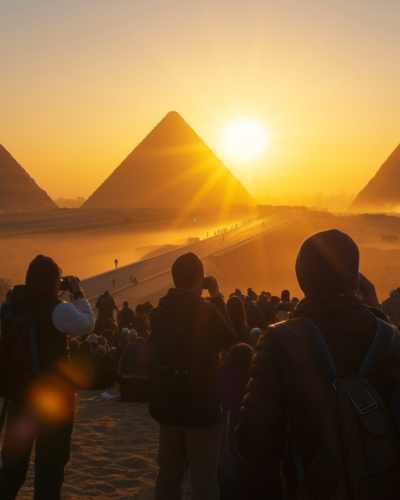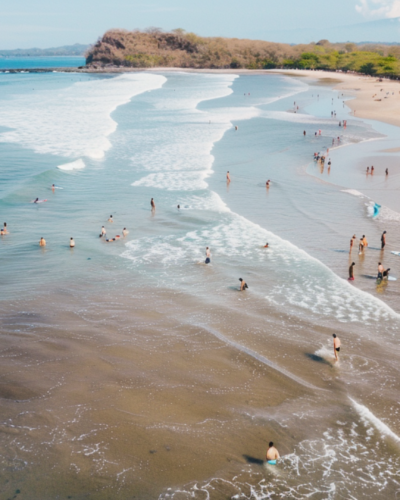Imagine cities where the future is already unfolding, where skyscrapers reach for the clouds, technology redefines daily life, and diverse cultures collide in vibrant, unexpected ways. These are not just cities; they’re glimpses into tomorrow’s world — and such emerging global metropolises are growing right before our eyes.
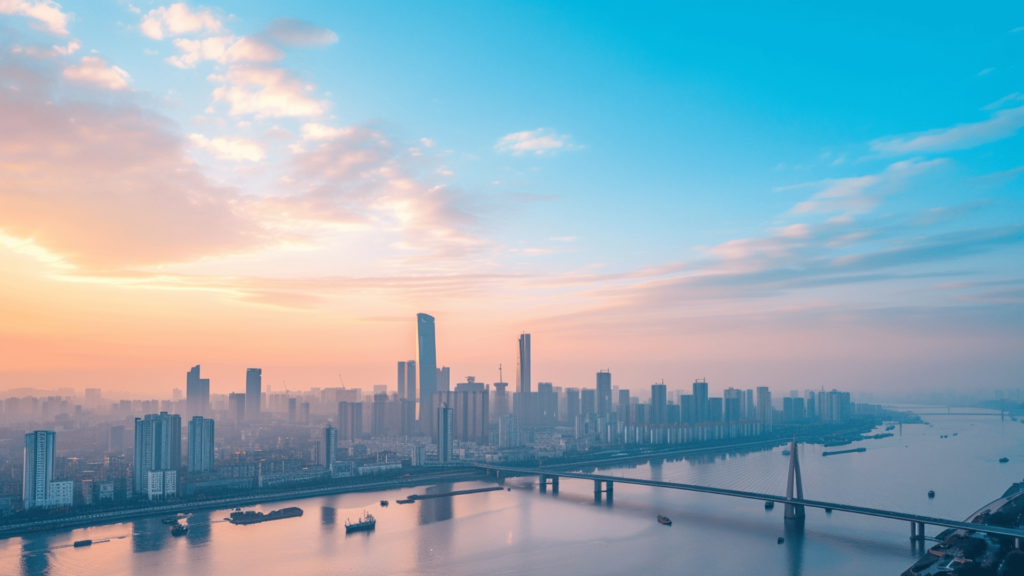
When we think of emerging megacities, images of progressive New York, developing Tokyo, or historic London might spring to mind. Yet, the future of urban living is not just being written in these well-known, emerging global metropolises but in emerging giants that are rapidly transforming and reshaping the global urban landscape.
Did you know that by 2030, the world is expected to have 43 emerging megacities, each housing more than ten million residents? This astonishing rise reflects not just a demographic shift but a cultural and economic revolution redefining how we live, work, and interact.
In this exploration, we venture into the cities at the forefront of this urban transformation. From Wuhan’s innovative approach to environmental challenges, Hyderabad’s burgeoning tech and film industry, and Lagos’s dynamic growth despite formidable obstacles, each city tells a unique story of resilience, innovation, and ambition. These are places where the future is not a distant dream but an evolving reality, marked by soaring skyscrapers, bustling streets, and a melting pot of cultures and ideas.
Wuhan, China: The Resilient Innovator in Emerging Megacities
Wuhan, China, often known for its pivotal role in the global economy, is transforming into a model of urban resilience. Strolling along the Yangtze River, one sees the harmony of modern skyscrapers with traditional pagodas. The city’s innovative “sponge city” initiative is a marvel. It addresses urban flooding with green spaces, permeable pavements, and rooftop gardens, making it a living example of sustainable urban planning. The juxtaposition of Wuhan’s bustling markets, such as the vibrant Jianghan Road, against its tranquil East Lake, reflects a city balancing growth with sustainability.
Beyond its environmental strides, Wuhan is a cultural gem. The Wuhan Museum and the Yellow Crane Tower offer glimpses into its rich historical tapestry. The city’s street food, particularly in Hubu Alley, is a culinary adventure, blending traditional flavors with modern zest. Wuhan’s universities add a youthful vibrancy, creating a city that’s not just living in the future but constantly reinventing it.
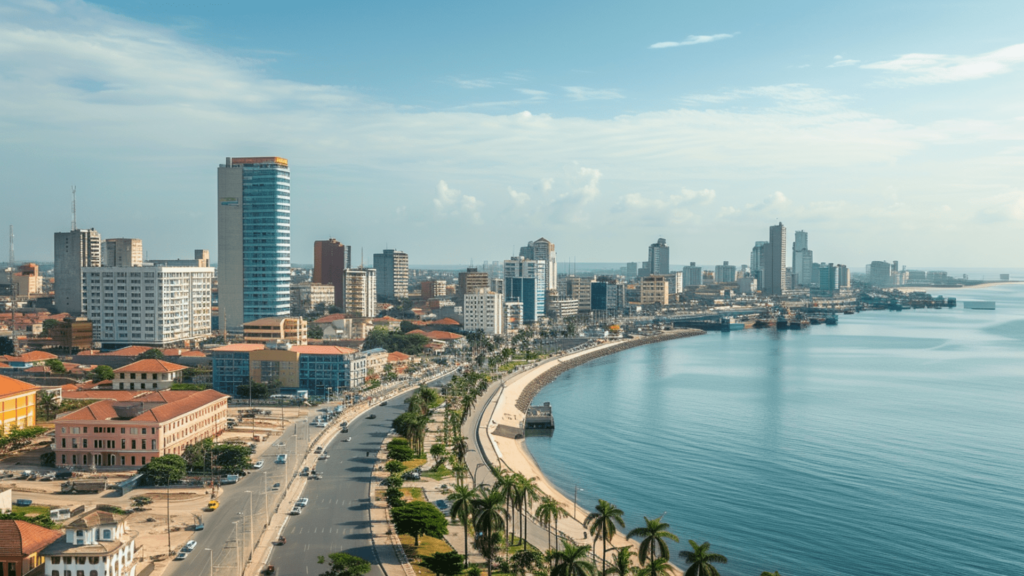
Luanda, Angola: A City of Contrasts
Luanda, with its high-rise skyline morphing rapidly, is a city of stark contrasts. From the luxurious, palm-lined Avenida 4 de Fevereiro to the bustling, vibrant Cazenga neighborhood, the city showcases an intricate tapestry of wealth and challenge. While exploring the Ilha do Cabo — a scenic stretch of beachside restaurants and bars, one can’t help but notice the city’s rapid growth and the social inequalities it grapples with. Luanda is a city where luxury and hardship coexist, offering a complex yet fascinating urban landscape.
On the other hand, Luanda’s coastal beauty, seen in the serene Mussulo Beach, contrasts its urban hustle. The Fortaleza de São Miguel offers a historical perspective, while the modernity of the Palácio de Ferro reflects the city’s evolving architecture. Despite its challenges, Luanda’s spirit is reflected in its music and dance, echoing through kizomba rhythms in the bustling city streets.
Hyderabad, India: The Emerging Megacity Of Tech and Culture
Hyderabad, an emerging megacity as dynamic as its famous biryani, is India’s answer to Silicon Valley. Amidst the IT parks like HITEC City, one discovers a burgeoning tech and biotech industry. The city’s historical roots, epitomized by the majestic Golconda Fort and the grandeur of Charminar, blend seamlessly with modernity. Hyderabad’s film industry, second only to Bollywood, adds a layer of cultural vibrancy. Whether it’s exploring the bustling Laad Bazaar or the serene Hussain Sagar Lake, Hyderabad is a city where tradition meets innovation.
Beyond its tech and historical allure, Hyderabad’s culinary scene is noteworthy. From the aromatic biryanis to the sweet faloodas, the city’s cuisine is a blend of Nizami heritage and modern tastes. The serene beauty of the Birla Mandir temple offers a spiritual respite, showcasing the city’s architectural diversity and cultural depth.
Tehran, Iran: The Smart City Aspiration
Tehran, cradled by the Alborz Mountains, is on a quest to redefine itself as a smart emerging megacity. Walking through its bustling bazaars and modern thoroughfares, one feels the pulse of a city eager to embrace technology while preserving its rich cultural heritage. The city’s ambitious plans to combat pollution and traffic, visible in areas like the modern Tabiat Bridge, reflect its commitment to sustainable urban development. Tehran, with its vibrant art scene and historic landmarks like Golestan Palace, is a city straddling the past and the future.
Furthermore, Tehran’s art scene is as dynamic as its urban landscape. Galleries like the Tehran Museum of Contemporary Art and the vibrant Tehran Art Bazaar offer insights into Iran’s rich artistic heritage. The Darband and Darakeh mountain trails provide a natural escape from the city’s bustle, especially if you’re staying in one of these camping destinations in Varzaneh, highlighting Tehran’s unique geographical setting and a nod to one of the world’s top emerging megacities.
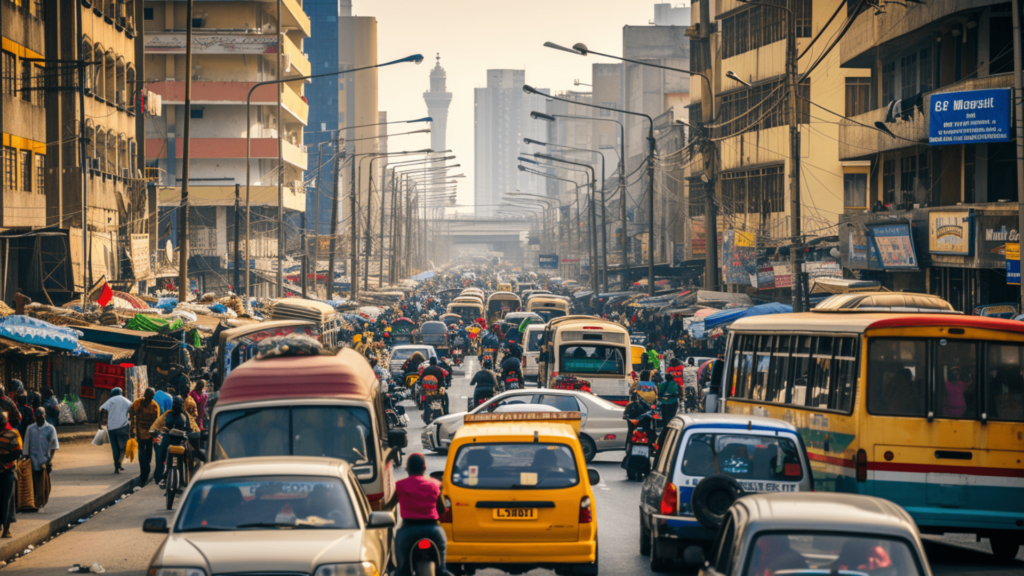
Lagos, Nigeria: The Dynamic African Metropolis
Lagos, Nigeria’s bustling heartbeat, is a city of relentless energy. The iconic Third Mainland Bridge, connecting the city’s islands with the mainland, symbolizes Lagos’s ambitious spirit. The city’s diverse neighborhoods, from Lagos Island’s historic charm to the bustling markets of Alaba, reflect its dynamic nature. Despite housing and transportation challenges, Lagos’s resilience is palpable in its thriving music scene, booming Nollywood industry, and burgeoning tech startups. Lagos is a city that never seems to sleep, constantly evolving and reinventing itself.
Not only that, but Lagos is also a cultural powerhouse, making it a shoo-in for our list of emerging megacities worldwide. The city’s art scene, showcased in galleries like Silverbird Galleria, is as vibrant as its streets. Festivals like the Eyo Festival reveal a deep-rooted cultural heritage. Victoria Island’s upscale residential houses and the historic Freedom Park, a former colonial prison turned leisure park, symbolize the city’s multifaceted character.
Jakarta, Indonesia: The Evolving Island Capital
Jakarta, a sprawling metropolis on the island of Java, is at the forefront of Indonesia’s urban transformation. The city’s skyline, dotted with skyscrapers, stands as a testament to its economic growth. Landmarks like the National Monument and the bustling Kota Tua (Old Town) showcase Jakarta’s rich history and cultural diversity. The city’s efforts to mitigate flooding and manage urban sprawl, seen in projects like the revitalization of the Ciliwung River, highlight its commitment to sustainable urban development. Jakarta is a city where tradition and modernity merge, offering a unique glimpse into Indonesia’s future.
Finally, Jakarta is not just a political and economic center but also a cultural hub. The Taman Mini Indonesia Indah Park showcases the archipelago’s diverse cultures. The bustling Jalan Sabang food street offers a taste of local cuisine. Ancol Dreamland, dotted with high-end hotels, provides a seaside escape within the city, emphasizing Jakarta’s unique charm as an island capital.
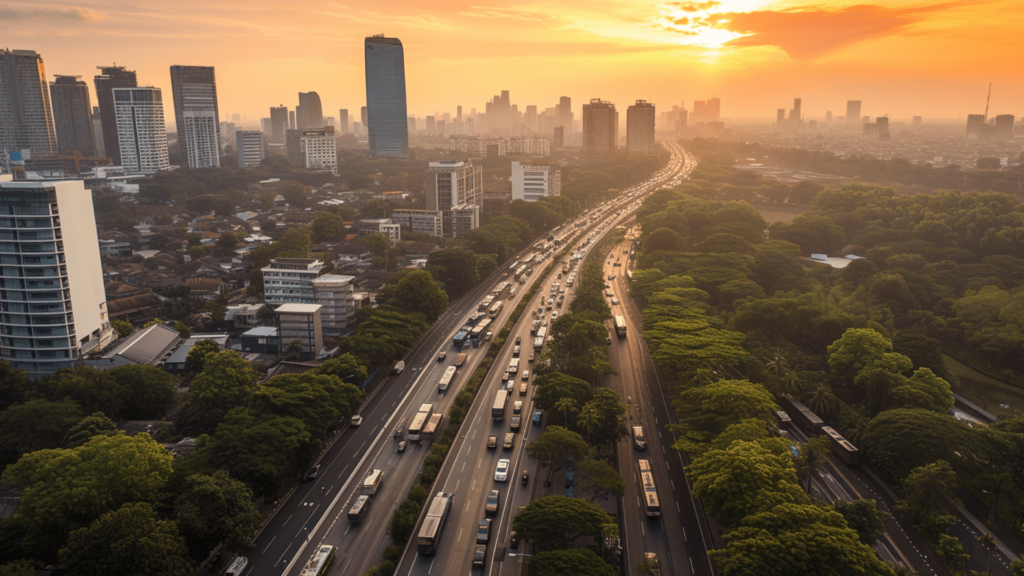
Charting Our Urban Future: A Journey Through Emerging Megacities
As we conclude our journey through these burgeoning megacities, we’re reminded of the immense potential and challenges in urban expansion and transformation. From Wuhan’s resilient environmental strategies to Lagos’s vibrant cultural dynamism, each city illustrates a unique facet of what the future of urban living might entail. These cities are not just growing in size; they’re becoming hotbeds of innovation, cultural melting pots, and testbeds for sustainable urban solutions.
This exploration links back to our introduction, emphasizing the global shift towards emerging megacities and their impact on our world. These urban giants are redefining lifestyles, economies, and landscapes, offering a window into a future where urban spaces are more than just places to live — they are places where the future is being actively shaped and redefined.
As readers, we are invited to not only witness but also engage with these transformations. Whether through travel, cultural exchange, or keeping abreast of global urban trends, each of us has a role to play in understanding and shaping the future of our urban world. So, let us embrace the opportunity to explore, learn, and contribute to the narrative of these extraordinary cities that are paving the way for tomorrow’s world.







